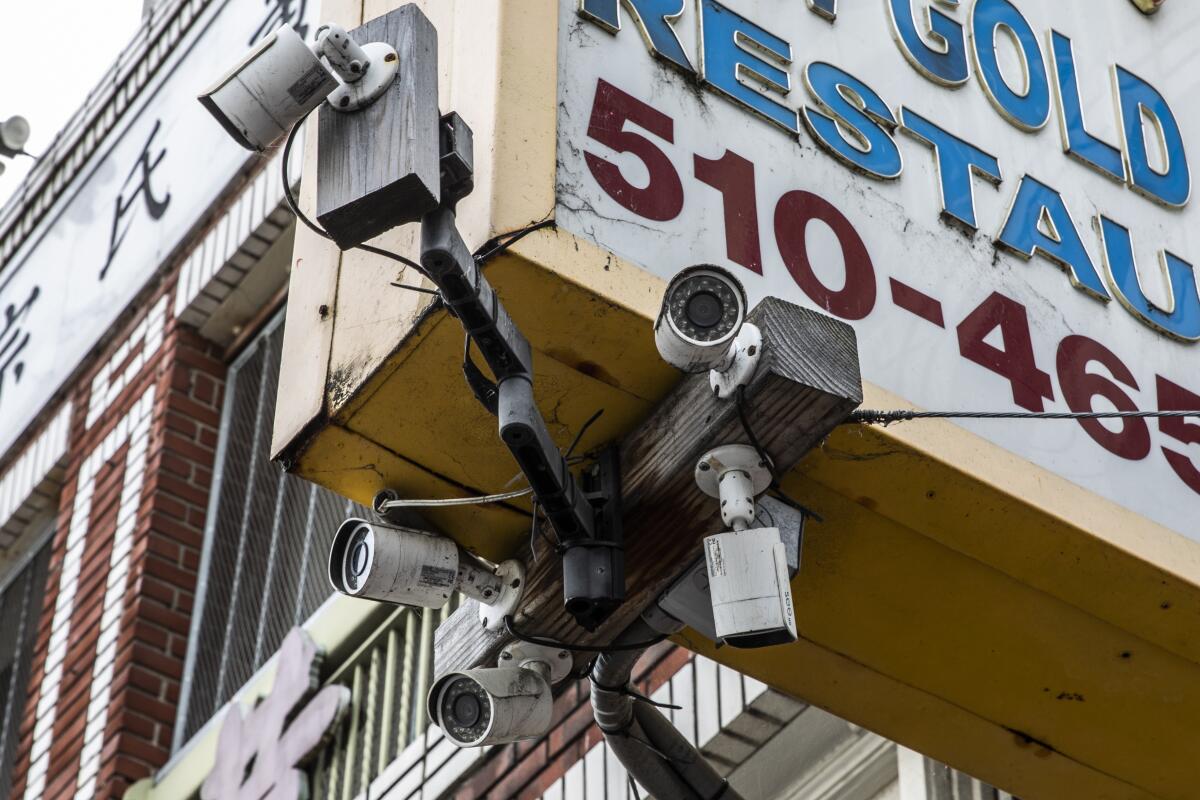To catch a thief: Oakland installs hundreds of surveillance cameras to try to thwart crime

Gov. Newsom announced Friday that Oakland will install about 480 surveillance cameras around the city and on freeways to help combat crime.
But some criminal justice reform advocates say that the move won’t make the city safer.
The cameras will enable law enforcement agencies to identify attributes on vehicles beyond just license plate numbers and enable them to find cars believed to be linked to crimes, according a news release from the governor’s office. The cameras can identify car type, color, license plate state, make, if a vehicle has a missing or covered plate and other features like bumper stickers and decals.
The system will allow real-time crime notifications when a crime-linked vehicle is spotted, alerting agencies such as the California Highway Patrol, the Oakland Police Department and others . Oakland has come under the spotlight in recent months as businesses big and small have shuttered or relocated and campaigns have been launched to oust the city’s mayor and Alameda County’s chief prosecutor. Just last month, Newsom announced the CHP was sending 120 officers to Oakland to try and mitigate a rise in theft and violent crime.
“This investment marks another step forward in our commitment to bolstering public safety and tackling organized crime and roadway violence in Oakland and across California,” Newsom said in a prepared statement..
About 290 of the cameras will be deployed on Oakland’s surface streets and 190 cameras will be on state highways in the East Bay, where Oakland is located, according to the release.
The system will retain information for 28 days and the camera footage will not be released to any entities outside California law enforcement, according to the governor’s office.
Oakland nonprofit Anti Police-Terror Project released a statement condemning the installation of the cameras.
“For every dollar we spend on surveillance cameras, that’s a dollar not spent on proven public safety strategies,” the group said in a statement. “When we decide to deploy 480 new cameras we should be asking how many people could be housed with the money we spend on this, how many people could be trained to do living wage jobs.”
The organization also argued that the cameras will most likely be deployed in low-income neighborhoods, disproportionately affecting Black and brown populations.
“The approach is adopting the same failed strategies we’ve taken for decades,” the statement said. “We’ve never stopped sending people to jails, yet crime keeps rising because it’s an approach that doesn’t work.”
More to Read
Sign up for Essential California
The most important California stories and recommendations in your inbox every morning.
You may occasionally receive promotional content from the Los Angeles Times.











